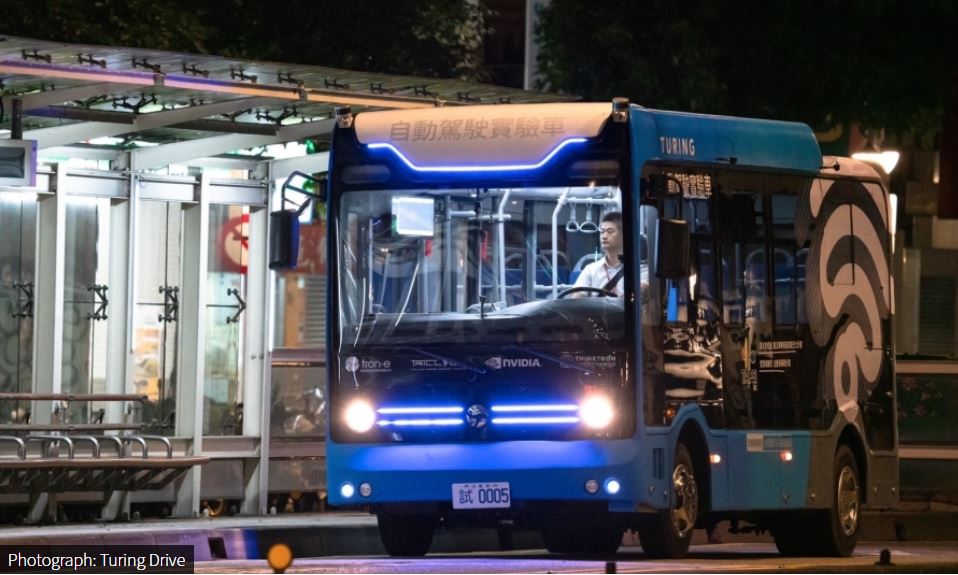Turing Drive to launch self-driving bus service for public transit in Taipei

Since May, Turing Drive has been testing autonomous buses on a dedicated road in Taipei after midnight, and if the trial project goes well, local residents will have a chance to take a test ride as early as September.
Driving at the speed of 10-20 km/h, these vehicles are being trained to interpret traffic, identify obstacles, and react to a wide variety of scenarios during the trial period.
Approved by the Ministry of Economic Affairs, the project is a collaboration between the two-year-old startup and the city government of Taipei, which sees self-driving buses as a solution to the shortage of public vehicle drivers at night.
Turing Drive, with its name a tribute to the British mathematician and AI theorist Alan Turing, develops a proprietary system that integrates all hardware and software components -- from cameras, lidars, to machine learning models -- into a solution to be deployed in a vehicle. In its self-driving bus, notably, about 70% of the hardware parts the company uses are made in Taiwan.
The company is a partner of Far EasTone, one of the three major telecom companies in Taiwan. The telco, a member of the 5G Automotive Association (5GAA), has been actively looking for companies developing Vehicle-to-everything (V2X) solutions to test its 5G network.
In July, Far EasTone, along with Chunghwa Telecom and Taiwan Mobile, launched its commercial 5G services in several metropolitan areas across Taiwan.
With 5G networks ready in Taiwan, the future for 5G-connected self-driving vehicles may not be too far away.

“In the future, all the devices will be able to communicate with each other, and that’s the power of 5G networks,” said David Shen, CEO of Turing Drive.
Through high-bandwidth and low-latency communications, driverless vehicles will connect to not only each other but also pedestrians, motorists, and infrastructure for sharing data more efficiently and effectively.
“V2X technologies allow vehicles to run truly autonomously,” said Shen. He explained, for instance, the self-driving vehicles today mostly rely on sensors installed along their route to detect pedestrians, but in the world of 5G, they can easily do so by connecting to people’s wearable devices, drastically improving road safety.
Following the current tria project, he said he hopes to deploy V2X communications technology on the same road, which has a dedicated bus lane, as his team’s next step.
〔Original :Meet Startup @ TW〕
https://meet.bnext.com.tw/intl/articles/view/46883